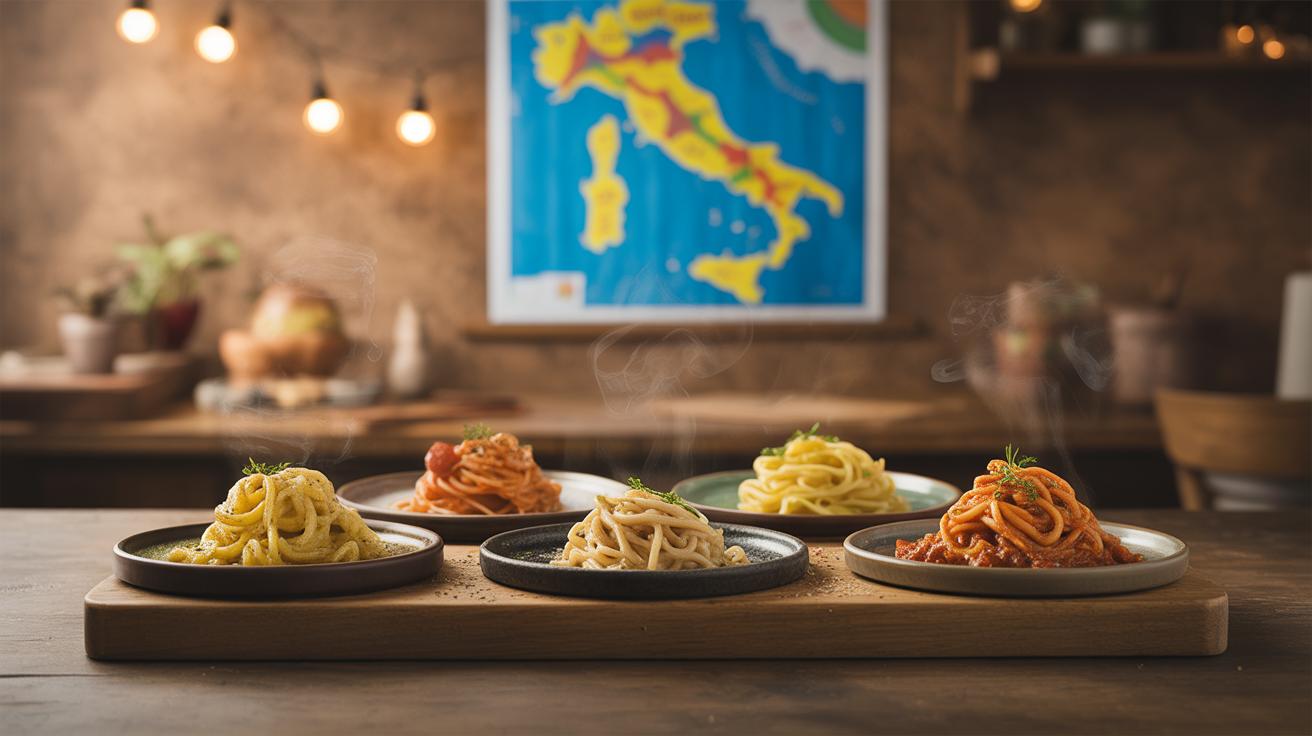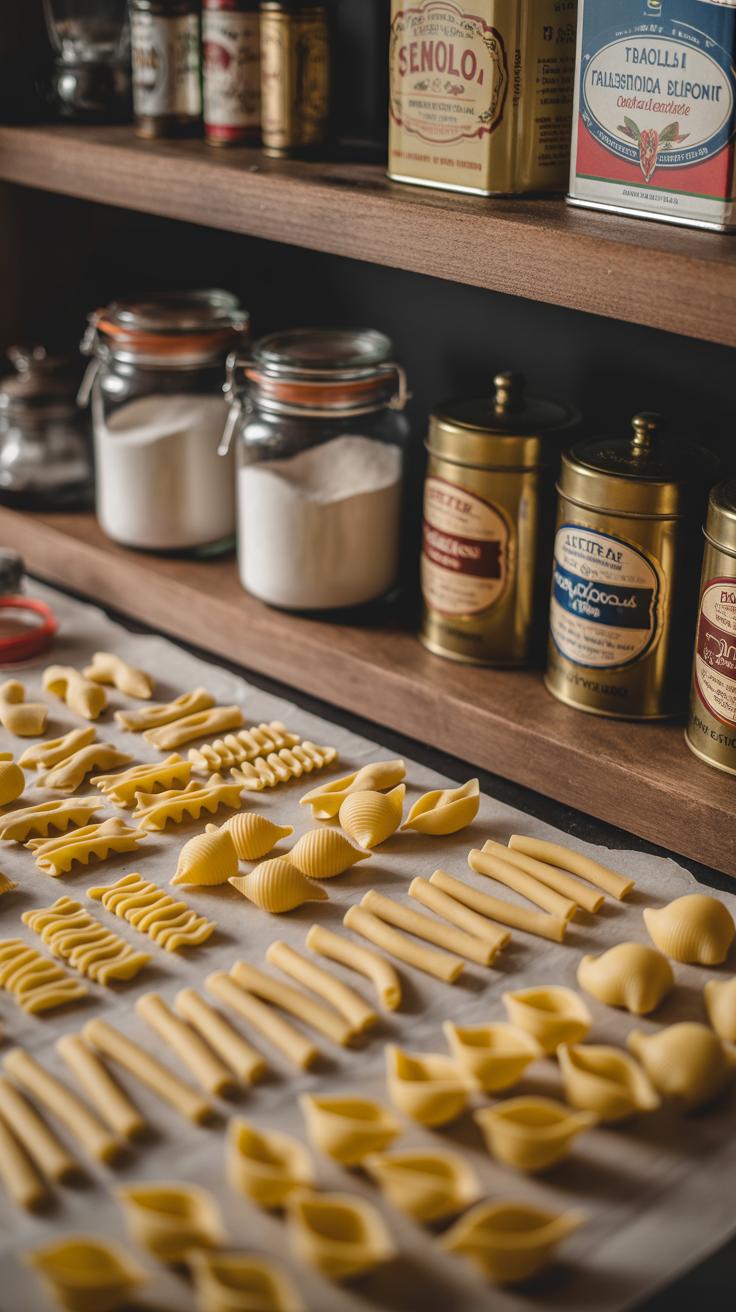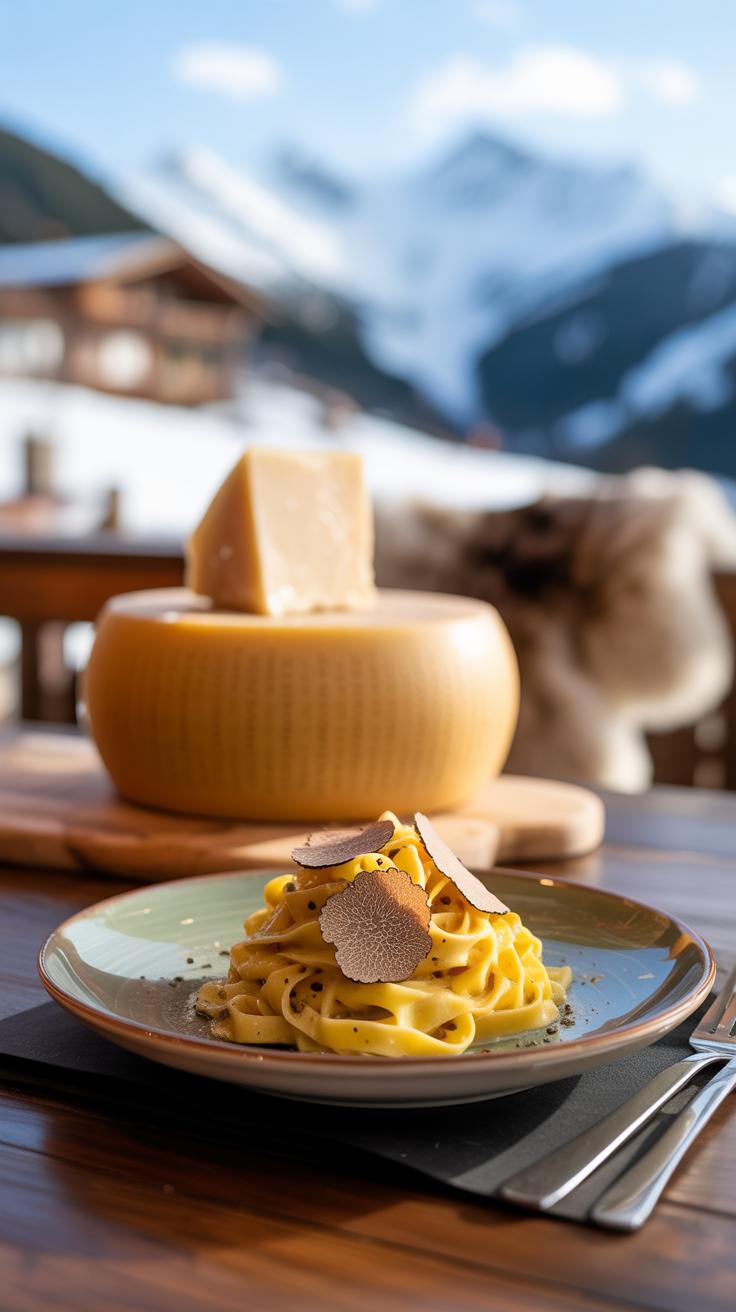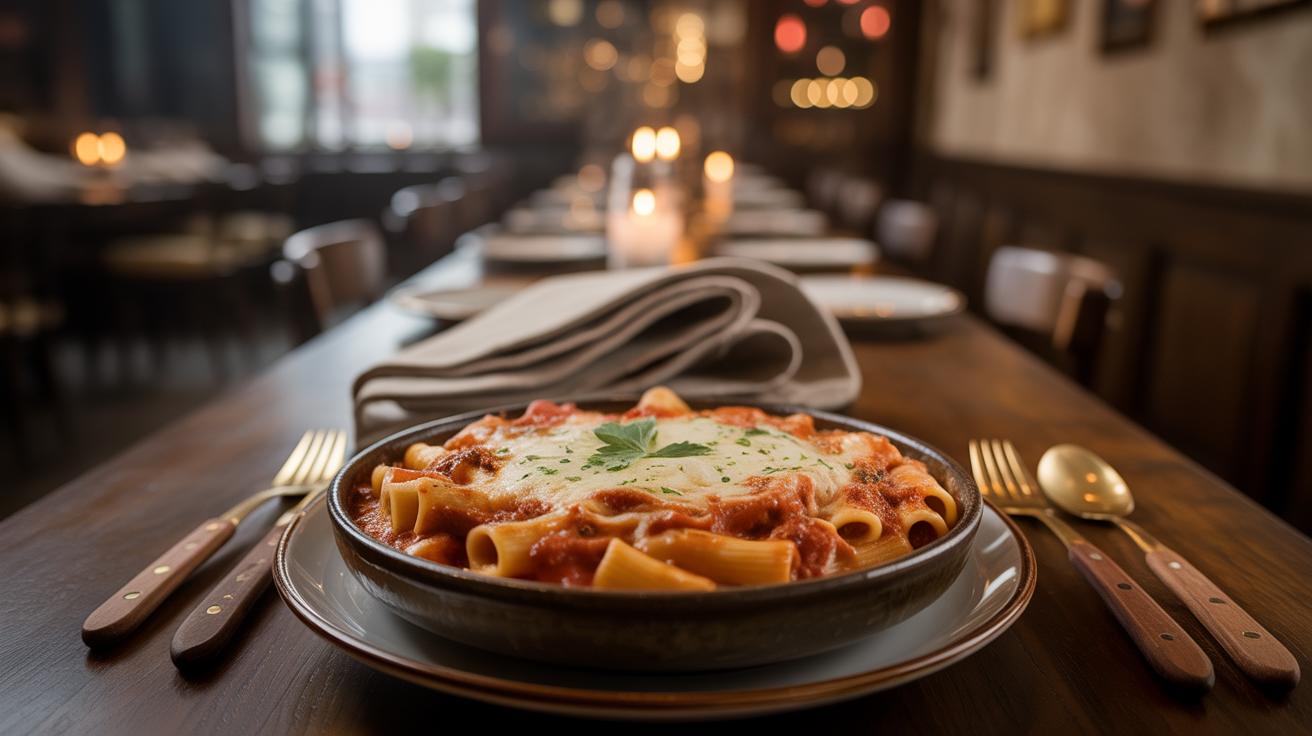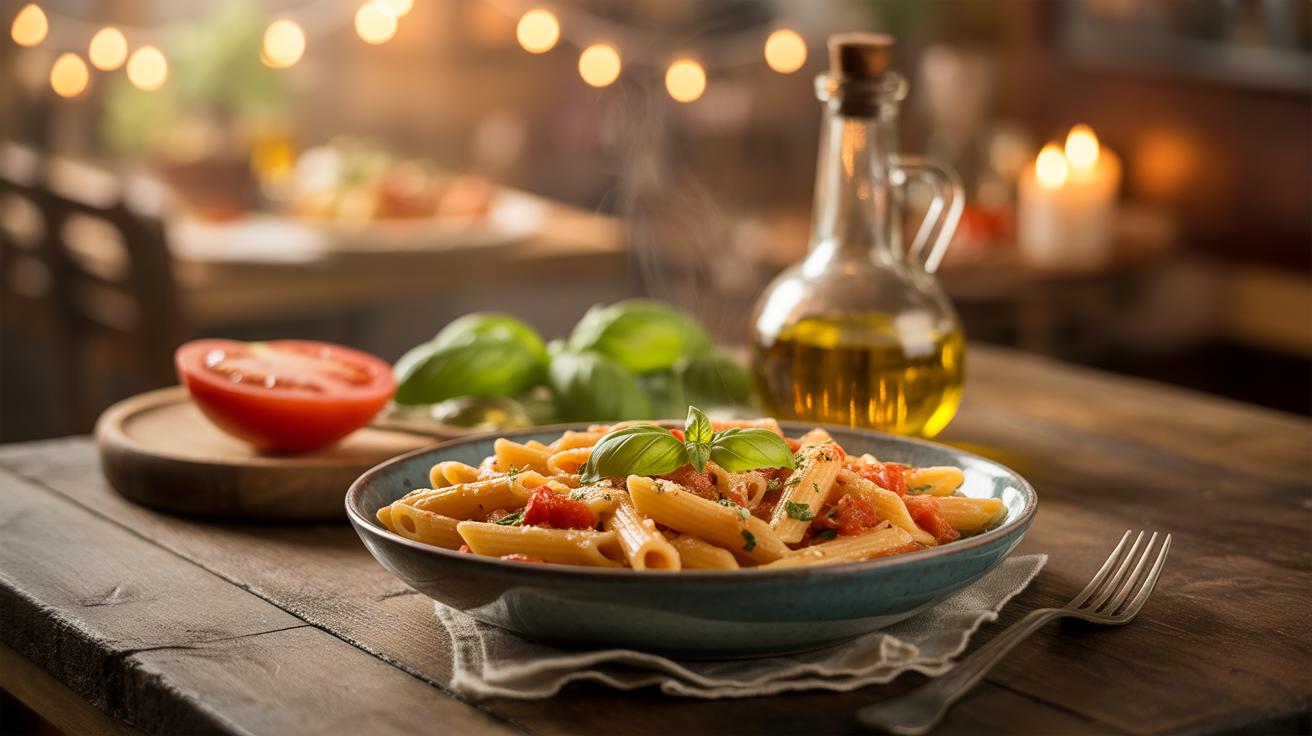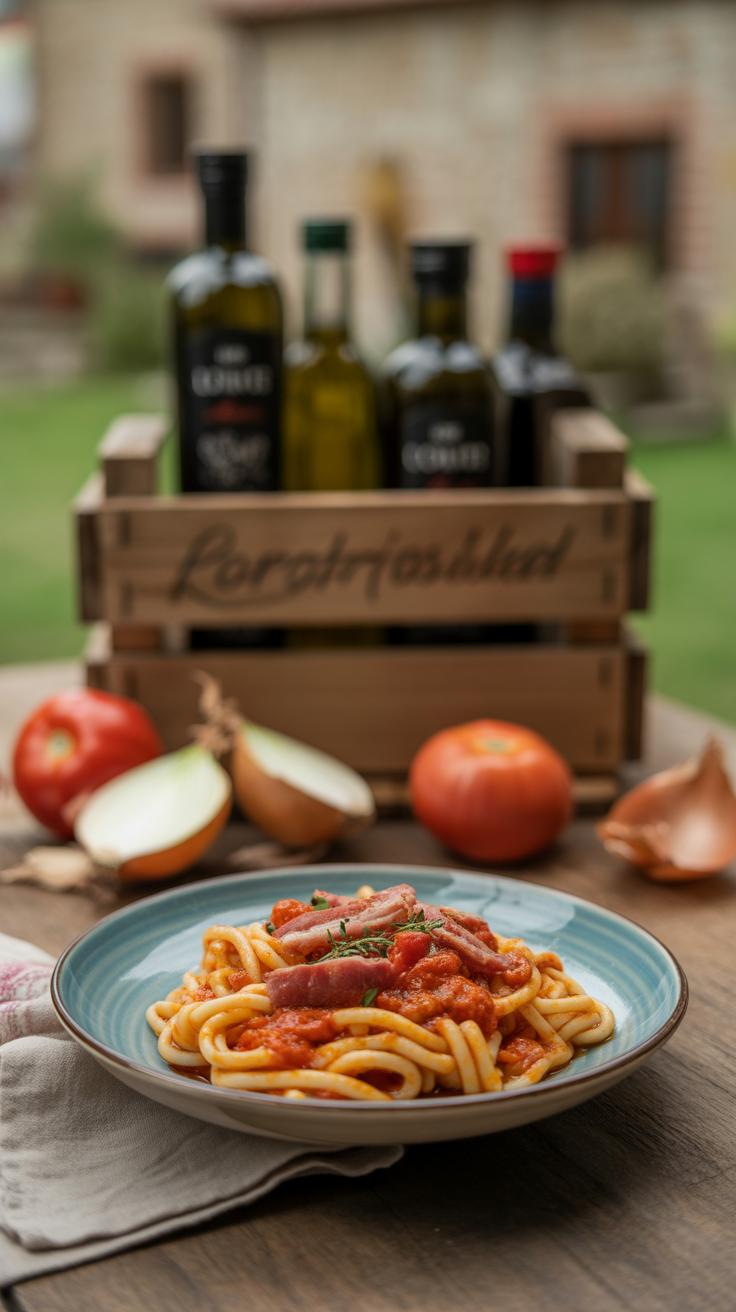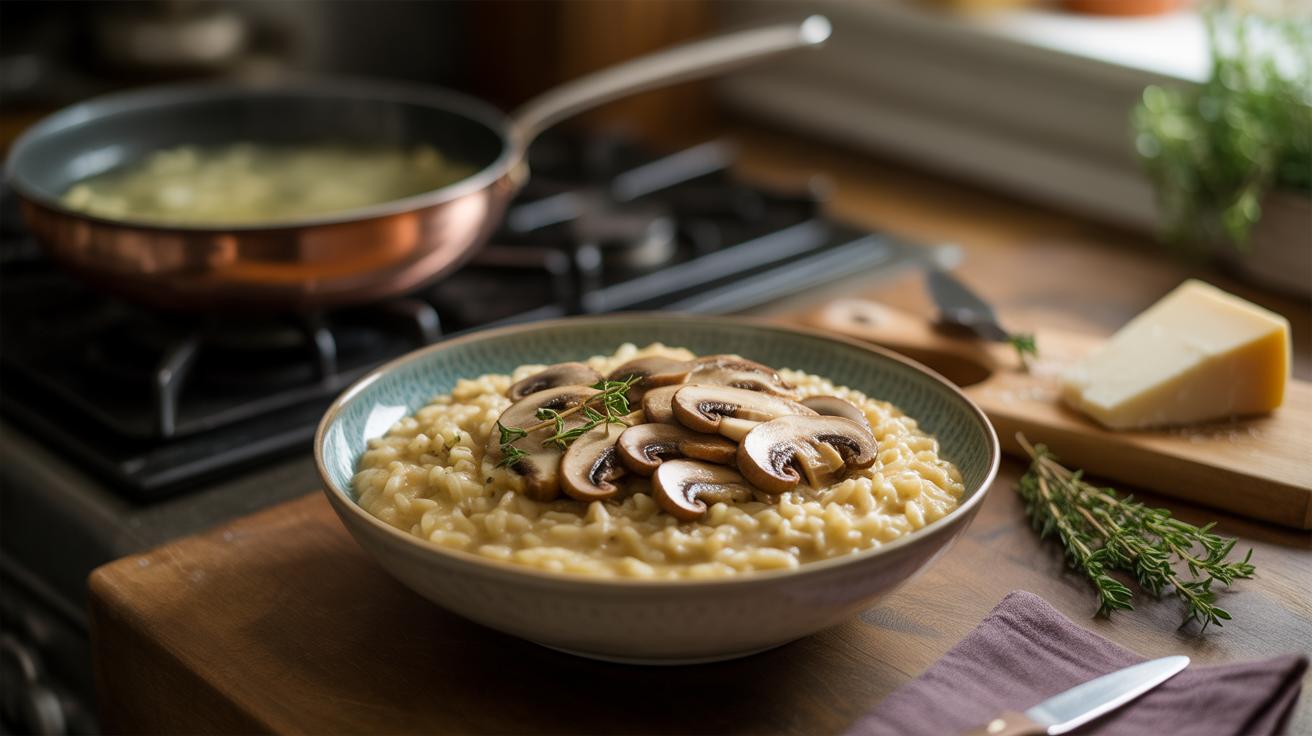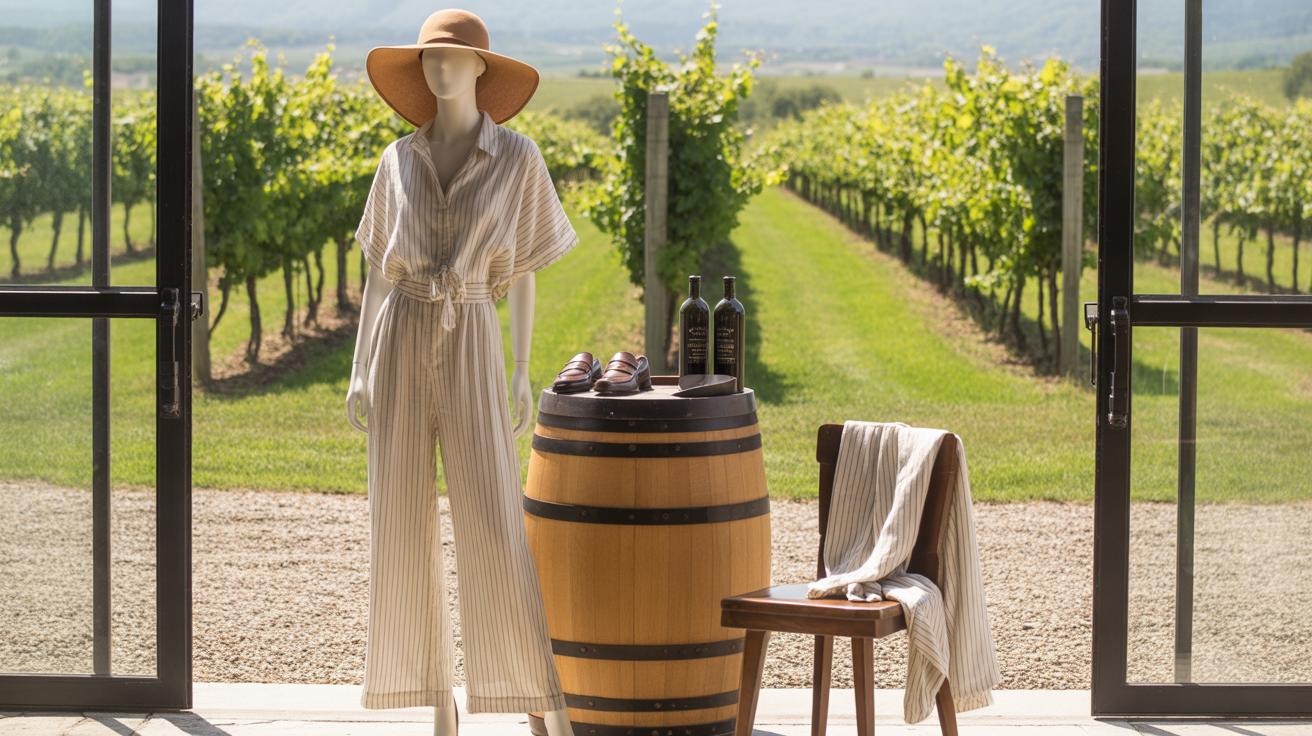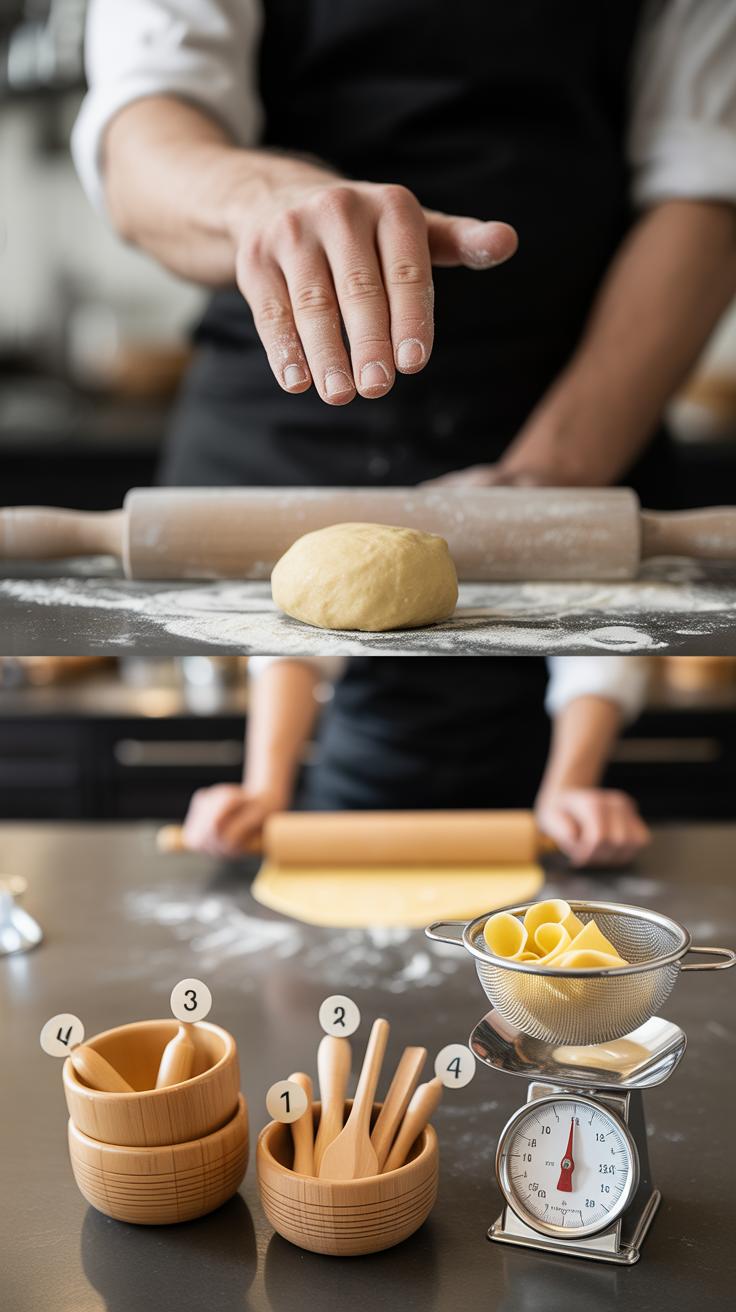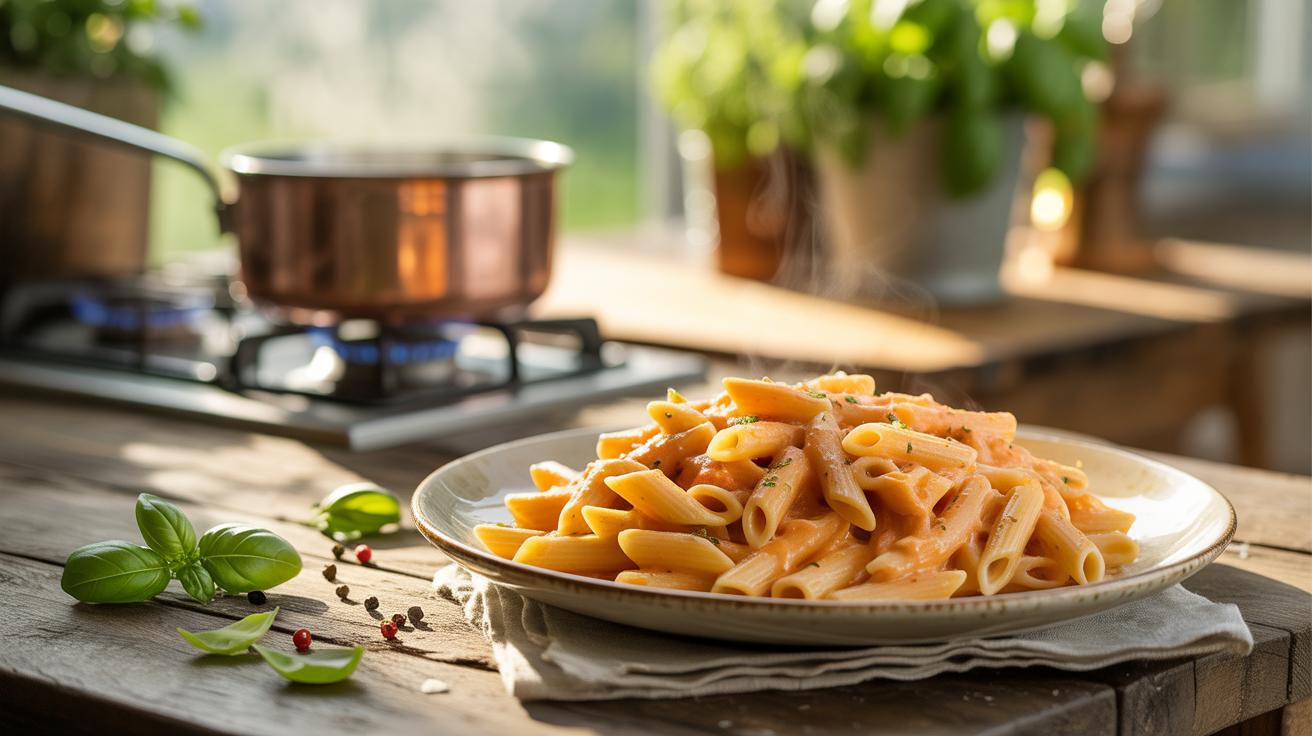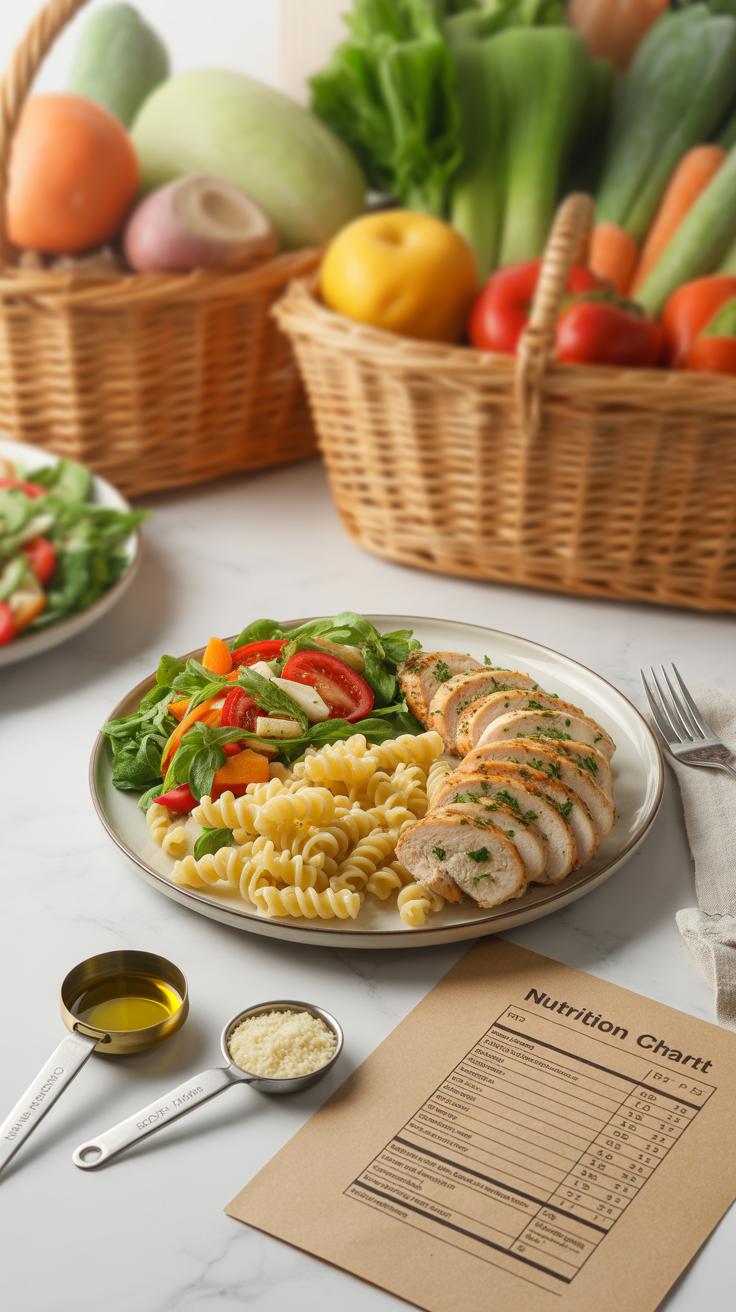Introduction
Italian pasta is more than just food; it is a core part of Italy’s culture and history. From ancient times to modern tables, pasta has been made in many forms and recipes unique to regions across the country. This article explores classic Italian pasta recipes that you can enjoy making and tasting, highlighting their origins and distinctive flavors.
You’ll learn about different pasta types, the sauces that dress them, and what makes each regional variation special. Whether you want to cook a simple pasta dish or dive into traditional and beloved recipes, this guide will walk you through the heart of Italy’s pasta heritage.
The History and Origin of Italian Pasta
Ancient Roots and Early Forms
Pasta’s story stretches far back, maybe much further than you’d expect. Some of the earliest evidence comes from ancient Italy’s neighbors and early civilizations like the Etruscans, who lived in the region before Romans. They left behind descriptions of foods made from ground grains mixed with water and shaped—sort of pasta-like. These early forms wouldn’t look much like the spaghetti or penne we know, but the idea of pressed or rolled dough was there.
Interestingly, ancient texts and archaeological finds hint at recipes resembling what we now call pasta. For instance:
- Records mention sheets of dough boiled or baked, often combined with sauces or cheese.
- Some scholars suggest that these early pasta dishes were more about stamina food for travelers or soldiers because of their portability.
It’s tricky to pinpoint an exact origin because grain-based dough foods existed across the Mediterranean. Yet, Italy’s unique regional climates and ingredients shaped early pasta’s evolution quietly over time.
Pasta Through the Middle Ages to Modern Italy
Moving into the medieval period, pasta’s role clearly grew. By the 13th century, documents describe dried pasta being produced and sold, especially in Southern Italy where the drier climate helped with storage. This made pasta practical for long journeys and trade.
At the same time, pasta began showing up in cookbooks and market stalls in cities like Naples and Sicily. The variety expanded slowly; shapes and recipes diversified depending on local tastes and available ingredients. It was no longer just a simple grain-and-water mix but something more refined, paired with fresh tomatoes, herbs, and cheeses as they became widely used.
You might find it surprising that pasta wasn’t always the superstar of Italian cuisine. It gained prominence gradually, often overshadowed by bread or polenta in some regions. Still, over centuries, pasta grew into a symbol of Italian food culture, adapting and evolving with each region adding its own touch.
What’s fascinating is how pasta’s development parallels Italy’s shifting cultural landscape. The dish’s spread reflects commerce, climate, and community tastes. So, when you enjoy a plate today, you’re tasting layers of history shaped by time and place.
Understanding Different Types of Italian Pasta
Dried and Fresh Pasta Explained
Italian pasta comes mainly in two forms: dried and fresh, and each has its own story, texture, and best uses.
Dried pasta is typically made from durum wheat semolina mixed with water. It’s tougher, holds its shape well, and stores for a long time. You’ll find it in the shape of spaghetti, penne, or rigatoni. Because it’s firmer, it’s great for hearty sauces or baked dishes.
Fresh pasta, on the other hand, usually includes eggs along with softer wheat flour, like tipo 00. This makes the dough more tender and delicate. Fresh pasta cooks faster and tends to pair with lighter sauces, like butter or cream, since it can be easily overwhelmed.
It’s interesting that Italians often think of fresh pasta as a bit of a luxury, sometimes homemade, while dried pasta is the everyday staple. But I’ve found both have their spot in the kitchen depending on the mood or meal.
Common and Unique Pasta Shapes
Pasta shapes come in endless variety, each designed with a purpose tied to a region’s ingredients and cooking style.
- Long and thin: Spaghetti and linguine, popular everywhere but especially in the south, often served with tomato or seafood sauces.
- Short tubes: Penne and rigatoni, great for thick sauces or baked dishes; they trap sauce inside their hollow bodies.
- Flat ribbons: Tagliatelle or pappardelle, from the north, are perfect for heavier, meat-based sauces.
- Stuffed pastas: Like tortellini or ravioli, usually fresh and from Emilia-Romagna, often served in broth or with light butter sauces.
Many shapes are unique to provinces and tell a story of local traditions—think trofie in Liguria or orecchiette in Puglia. The shape isn’t just aesthetic; it’s about how sauce clings, how it feels eating, sometimes even how it cooks.
Have you ever noticed how a different shape might completely change the dish? That’s the kind of subtle detail that keeps pasta endlessly interesting.
Classic Northern Italy Pasta Recipes
Northern Italy’s pasta dishes stand out for their richness and variety, often featuring butter, cream, and cheeses rather than the olive oil and tomato sauces typical of other regions. If you think of Northern pasta, think of silky filled pastas and hearty ragùs instead of light, tangy flavors.
The region leans heavily on ingredients like Parmigiano-Reggiano, cream, and butter, all abundant in places like Emilia-Romagna and Lombardy. This results in dishes with deeply satisfying textures and layered tastes. Cooking techniques here frequently involve slow simmering of sauces and delicate folding of filled pastas.
Rich Sauces and Filled Pastas
Dishes from the North are often characterized by creamy, sometimes buttery sauces. Filled pastas like tortellini and ravioli are quite common, stuffed with mixes of cheese, meat, or vegetables.
Take tortellini, for example—a small ring-shaped pasta stuffed usually with pork loin or prosciutto and Parmigiano-Reggiano. They’re boiled quickly and served in broth or with cream sauces. The skill in making these lies in the thinness of the pasta and the balance of the filling, which mustn’t overpower.
Pasta dishes here often involve melting butter with sage or making emulsions with cream for a silky finish. It’s a different world from the pungent tomato-based sauces of Southern Italy.
Examples of Northern Pasta Classics
-
Pesto alla Genovese: Originating in Liguria, this sauce combines fresh basil, pine nuts, garlic, olive oil, and plenty of Parmigiano-Reggiano. It’s vibrant yet smooth—perfect with trofie or trenette pasta.
-
Tagliatelle al Ragù: From Emilia-Romagna, this dish involves fresh tagliatelle noodles served with a slow-cooked meat ragù, often called Bolognese outside Italy. The sauce is rich with beef, pork, and sometimes a hint of tomato.
-
Risotto alla Milanese: While technically not pasta, it shares the Northern love for richness with saffron-infused creaminess; it often accompanies osso buco or stands on its own as a reflection of Lombard culinary values.
Exploring Northern Italian pasta is like stepping into a world where flavors unfold gently, driven by high-quality dairy and hearty meats. It might seem heavy if you expect the lighter, fresher tastes that come further south—but there’s a satisfying comfort here that lingers.
Traditional Central Italy Pasta Recipes
Central Italy’s pasta dishes tend to focus on a careful balance between simple, fresh ingredients—tomatoes, olive oil, and local herbs often take center stage. The flavors feel restrained but — well, they linger. There’s a kind of quiet intensity in how these elements combine, especially in regions like Tuscany and Umbria where the terroir truly influences every bite.
Tomato and herb-based sauces form the backbone of many dishes here. If you’ve ever tasted a well-made Pasta all’Amatriciana, you know the sauce isn’t just about tomatoes; it’s about the sharp tang of guanciale fat teasing the sweetness of ripe fruit and the earthiness of thyme or sage picked nearby. Olive oil isn’t just a cooking fat; it’s part of the flavor itself, often drizzled atop just before serving. I think that extra splash makes all the difference—it’s fresh but dense, somehow.
Classic pastas such as Amatriciana and Carbonara reflect this philosophy. With Carbonara, you get an unusual simplicity—egg, guanciale, Pecorino Romano, and black pepper—but the taste is surprisingly layered and comforting. These recipes don’t shout. Instead, they invite you to discover layers slowly, almost like the region’s own pace of life.
Try to imagine a plate of pici from Tuscany—thick hand-rolled strands—with a sauce of simple crushed tomatoes, fresh basil, and just a hint of garlic. Or the rich sensation of Cacio e Pepe, relying purely on Pecorino Romano and freshly cracked black pepper, yet delivering a profound depth that some might find puzzling at first. It makes you wonder: how can so little be so… satisfying?
Southern Italy Pasta Recipes and Flavors
Southern Italian pasta dishes often carry a bold punch, leaning heavily on strong, straightforward ingredients. Garlic is almost always present, lending its sharp aroma that cuts through richer components. Chili peppers add a slow-building heat that lingers without overpowering, while seafood—fresh and briny—brings a distinct coastal character you wouldn’t find elsewhere.
Think of sauces here as unapologetically flavorful. They combine a few key ingredients like ripe tomatoes, anchovies, sometimes olives or capers, and generous amounts of garlic and chili flakes. Olive oil tends to be used liberally, bringing depth and fruitiness that balances the heat and saltiness. These sauces don’t try to be subtle; their charm lies in their intensity and simplicity.
Some dishes stand out because they capture the essence of the region:
- Pasta alla Norma: Eggplant, tomato, basil, and salty ricotta salata—each bite mixes sweet, tangy, and salty notes.
- Spaghetti alle Vongole: Clams cooked just right with garlic, white wine, and chili, offering freshness with a slight kick.
- Orecchiette with broccoli rabe: A slightly bitter green paired with garlic and sometimes anchovies, creating contrast that’s surprisingly addictive.
These recipes might seem simple, but their impact is anything but. Does that kind of boldness always suit your palate? Maybe not every day, but when you want pasta that makes a statement, Southern Italy has you covered. It’s a reminder that sometimes, less complexity with more punch is the way to go.
Pasta Preparation Tips and Techniques
Boiling and Cooking Pasta Properly
Boiling pasta sounds simple, but getting it just right takes some care. Use a large pot with plenty of water—this prevents the pasta from sticking and cooks it evenly. Salt the water generously; it should taste almost like the sea. Many skip this, but it really makes a difference in flavor.
Once the water boils, add the pasta and stir occasionally. Stirring isn’t needed nonstop but letting it rest can cause clumps. To check if it’s done, taste it a minute or two before the package suggests. You’re aiming for al dente—tender but with a slight bite. Overcooked pasta can become mushy, which dulls the texture and absorbs sauce differently.
Drain the pasta but don’t rinse it unless you plan to make a cold dish. Leaving a bit of cooking water can help your sauce cling better—something I learned the hard way when my sauce just slid off the noodles.
Matching Pasta with Sauces
Choosing the right sauce for your pasta can feel tricky, but the shape of the pasta offers some clues. Thicker, sturdy shapes like rigatoni or penne hold up well to chunky sauces. They trap bits of meat and vegetables in their ridges or tubes, so every bite has some texture.
Delicate pastas like angel hair suit light, smooth sauces—think simple olive oil or a gentle tomato glaze. In Southern Italy, for example, spaghetti with garlic, chili, and anchovies thrives because the thin noodles soak up those sharp flavors without getting overwhelmed.
One more thing: regional preferences matter. For instance, northern Italy favors creamy, butter-based sauces with broad noodles like pappardelle, while the south leans into tomato and seafood with thinner varieties. It’s not a strict rule, but it’s worth experimenting—does this sauce feel right with that pasta? Sometimes the unexpected pairing surprises you.
Enjoying Italian Pasta Beyond the Plate
Pasta isn’t just food in Italy. It’s a thread that weaves through daily life, family moments, and festive gatherings. When Italians eat pasta, it’s often more than just satisfying hunger. It’s about sharing time, conversation, and even unspoken connection. Meals often stretch out, with pasta appearing early on, usually as the primo, or first course.
The structure of an Italian meal often follows a certain rhythm: a light antipasto, followed by pasta, then meat or fish, and finally dessert. Pasta shapes the pace early on, encouraging everyone to settle in and enjoy together. Plates often come family-style or in small individual portions, depending on the region or occasion. Sometimes the focus is on simplicity—the pasta itself is the highlight, with just olive oil or cheese. Other times, sauces are richer, more complex, reflecting nearby local ingredients.
Serving pasta is almost ritualistic. You might see large bowls passed around, everyone helping themselves, or a host carefully plating each dish. The sharing sparks a relaxed atmosphere. Eating pasta at an Italian table means being part of a story, not just a meal.
Making Pasta Dinners at Home Memorable
If you want to host an Italian-style pasta dinner, think about pacing and atmosphere. Don’t rush. Let your guests linger between courses. Maybe start with a light salad or a simple bruschetta before diving into pasta dishes like a classic carbonara or a sunshiny spaghetti aglio e olio.
Here are a few ideas:
- Offer a variety of pasta shapes and sauces to keep things interesting—something with a meat sauce, a vegetable-based one, and a cheese-focused recipe.
- Serve wine or sparkling water alongside—Italian meals love that sense of balance and refreshment.
- Encourage your guests to help themselves from communal bowls or platters; it invites conversation and breaks formal barriers.
- Finish with an easy dessert, like gelato or a slice of fruit tart, to keep the focus on conviviality.
By focusing on simple pleasures and sharing, your pasta dinner can feel genuinely Italian—even if you’re miles away from Naples or Tuscany.
Health and Nutrition Aspects of Italian Pasta
Pasta is often seen as just a source of carbs, but there’s a bit more to it than that. Most traditional pasta is made from durum wheat semolina, which gives it a good amount of complex carbohydrates. These carbs provide steady energy rather than quick spikes, which is something I appreciate on busy days. Pasta also contains some protein, though not as much as you might think. For example, a typical serving has about 7 to 8 grams of protein, not bad but not exactly a powerhouse either.
Of course, the nutritional value depends on the type: whole wheat pasta packs more fiber, which helps with digestion and makes you feel fuller longer. It’s a simple switch, but it can really change how you experience a meal.
When thinking about healthy pasta meals, the key is balance. I’ve found that adding plenty of vegetables can boost the nutrient content without overwhelming the dish. Toss in tomatoes, spinach, or zucchini—whatever’s in season—along with some lean proteins like grilled chicken or beans. That way, your pasta isn’t just carbs on a plate; it becomes a broader, more satisfying meal.
Portion control is another thing people often overlook. It’s easy to pile up the pasta, but sticking to a reasonable serving size makes room for other nutritious sides or a light salad. Have you ever noticed that adding a side of roasted veggies lets you enjoy pasta more mindfully, without feeling like you’re missing out?
Conclusions
Classic Italian pasta offers a rich taste of Italy’s diverse regions and culinary traditions. Each dish tells a story of local ingredients and time-honored cooking methods. You now know how pasta shapes and sauces vary from the north to the south of Italy, reflecting geography and culture.
As you try these recipes at home, remember that the best pasta comes from simple, fresh ingredients and a passion for good food. Enjoy creating your own authentic Italian pasta dishes, and bring a piece of Italy to your table with every bite.

